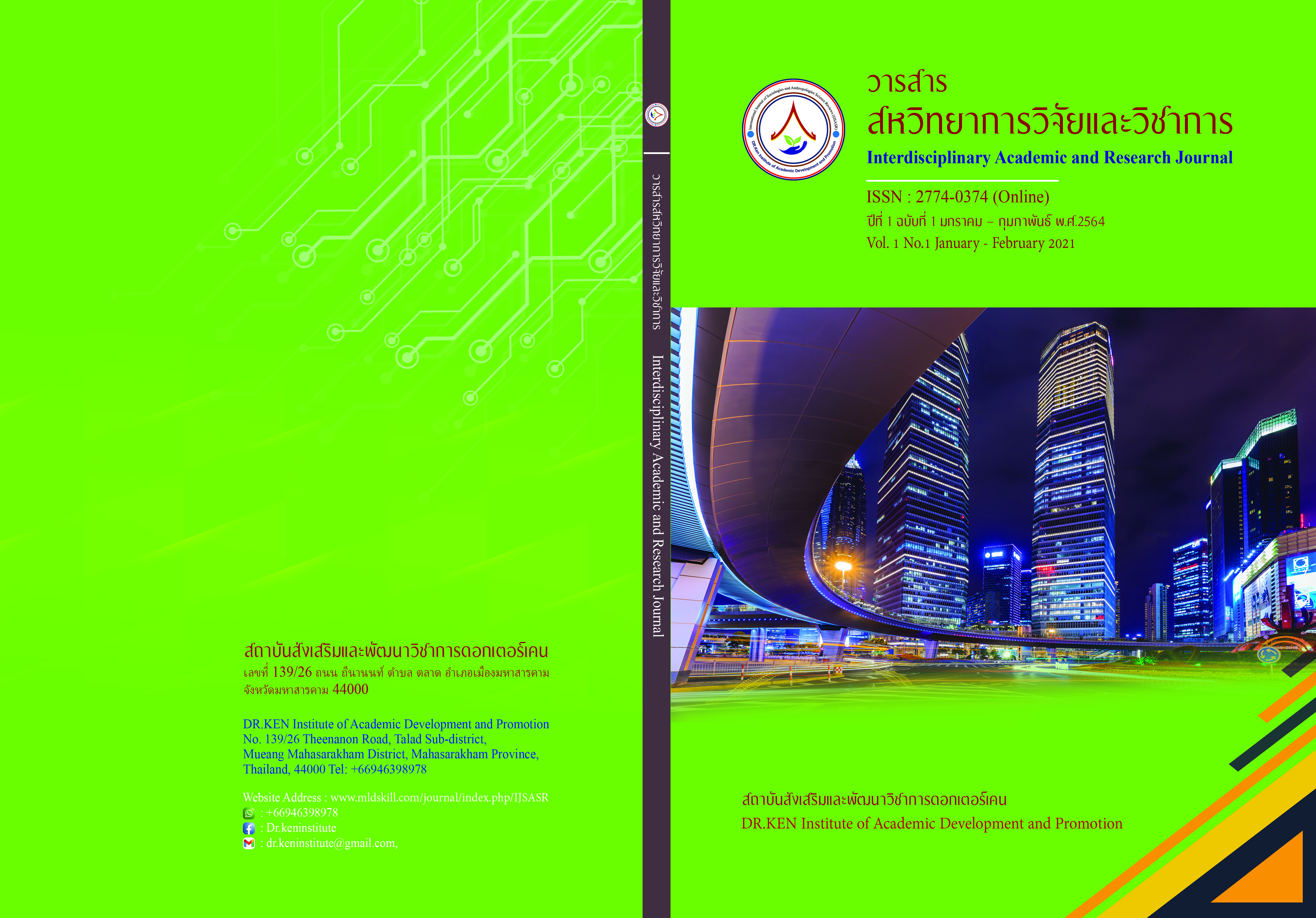Model for Driving the Building Process of Professional Learning Community in the Educational Institution
DOI:
https://doi.org/10.14456/iarj.2021.4Keywords:
Driven model, Professional Learning CommunityAbstract
Professional Learning Community and Educational Management or Professional Learning Community: PLC is a gathering of cooperation and learning together of teachers, administrators, and educators to exchange to reflect results in learning improvements. Teaching to enable teachers to practice teaching better and students with higher quality, higher academic achievement. This learning community is a collective effort to develop the quality of their learning management grouping together in a willing manner, voluntarily helping each other, and ready to reflect on the performance honestly, adhere to the principle of responsibility, similar obligations, use the main method of discussion and must It is continuing seriously. This is to create an organizational culture that drives the quality of learning management together for both administrators, teachers, and students, which is a sustainable development cycle. Educational institutions are learning organizations based on friendship, vision, values, goals, and common missions by working together as a learning team that has teachers as a leader and administrators as administrators to support learning and professional development, transforming one's quality to quality of learning management that emphasizes the success or effectiveness of the people. Learning is the focus and joy of working together among members of the learning community.
References
ราชบัณฑิตยสถาน.(2555). พจนานุกรมศัพท;ศึกษาศาสตร; ฉบับราชบัณฑิตยสถาน.กรุงเทพฯ: อรุณการพิมพ.
วิจารณ; พานิช. (2555). วิธีสรaางการเรียนรูaเพื่อศิษย; ในศตวรรษที่ 21. กรุงเทพมหานคร :มูลนิธิสดศรีสฤษดิ์วงศ์.
สุรพล ธรรมรjมดีและคณะ. (2553). อาศรมศิลป์วิจัย: การวิจัยและพัฒนาชุมชนแหjงการเรียนรู้แนวจิตตปริญญา. เอกสารวิชาการการเรียนรูaสูjการเปลี่ยนแปลลำดับที่ 8. นครปฐม: เอมี่ เอ็นเตอร;ไพรส;จํากัด.
Cranston, J. (2009). Holding the Reins of the Professional Learning Community: Eight Themes Research on Principals Perceptions of Professional Learning Communities. Canadian Journal of Educational Administration and Policy, 90,1-22
DuFour, R. (2007). Professional Learning Communities: A Bandwagon, an Idea Worth Considering, or Our Best Hope for High Levels of Learning?. Middle School Journal. 39 (1):4-8.
McLaughlin, M.W. & Talbert, J.E. (2006). Professional communities and the work of high school teaching. Chicago: University of Chicago Press.
Padwad, A., & Dixit, K. K. (2008) Impact of Professional Learning Community Participation on Teachers Thinking About Classroom Problems. Tesl-Ej, 12(3), n3.
Schmoker, M. (2004). Learning communities at the crossroads: Toward the best Schools, we’ve ever had. Phi Delta Kappan. 86 (1): 84-88.
Stoll, L., & Louis, K.S. (2007). Professional learning community. New York: Open university press.
Thompson, S. C., Gregg, L., and Niska, J. M. (2004). Professional learning communities, leadership, and student learning. Research in Middle-Level Education. (Online). From: http://www.nmsa.org/Publications/RMLEOnline/tabid/101/ Default.aspx.
Downloads
Published
How to Cite
Issue
Section
License

This work is licensed under a Creative Commons Attribution-NonCommercial-NoDerivatives 4.0 International License.
Copyright on any article in the Interdisciplinary Academic and Research Journal is retained by the author(s) under the under the Creative Commons Attribution-NonCommercial-NoDerivatives 4.0 International License. Permission to use text, content, images, etc. of publication. Any user to read, download, copy, distribute, print, search, or link to the full texts of articles, crawl them for indexing, pass them as data to software, or use them for any other lawful purpose. But do not use it for commercial use or with the intent to benefit any business.
















.png)


